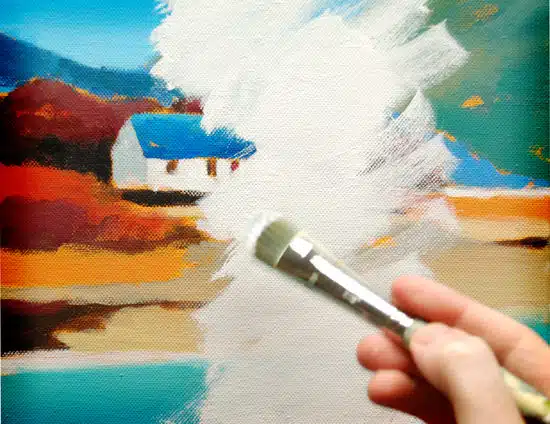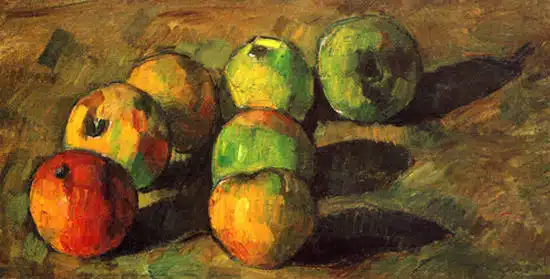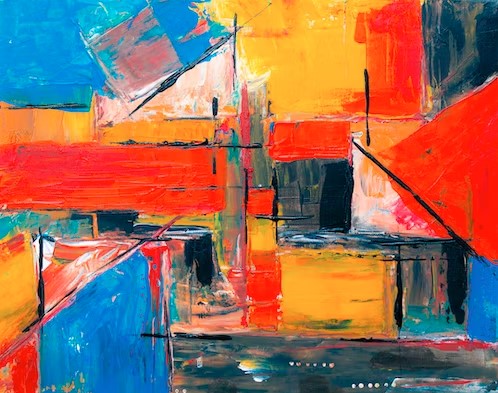Painting Techniques for Acrylic Paintings
It’s the never-ending argument you have with yourself.
Should I start over on a new canvas or paint over my unfinished painting?
How do you compare starting over to the time, money, and emotions you’ve already expended? It’s nearly excessive.
When do you need to start your acrylic painting again?
Imagine the scene, you’ve been tinkering over a still life painting for days, tweaking a bit here, a bit there and something is just is not right. Your previous colour has all dried up and you just can’t match it again. The apple looks wrong, the drawing is a bit ‘out’ and the colours, well what were you thinking the day before?
Oh sod it, I’m going to start again.
You’ve spent out money on the canvas and want to change the picture so you reach for the white paint intending to paint out the whole thing. Right choice or wrong choice?
How to cover your Acrylic painting
You have to be aware of a few things if you decide to repaint, and to make the decision, is it worth it?
1. The paint surface won’t feel the same – Once you’ve lost the ‘tooth’ of the canvas the paint behaves differently, it doesn’t pull off the brush in the same way.
2. You can’t use watercolour techniques. Because once the paint surface has built up watery paint just won’t behave the same. Some of the most interesting areas in paintings are from the mix of thin transparent paint with thick impasto. This can be key in portraits when trying to create the illusion of depth.
3. The paint can feel chalky. If you paint over the whole canvas with White acrylic, it will feel chalky when you paint over it.
4. You lose the glow of the ground. When you paint Yellow Ochre onto a white canvas (See: How a prepared canvas can drastically improve your painting) the trick is to paint it thick enough to form an opaque layer but thin enough to allow the white from the canvas to shine through and give the colour a glow. When you paint over an existing painting you lose this glow.
I know what you’re thinking, ‘I’ll just paint the coloured ground again‘. The problem is you’ll have lost the absorbency of the canvas and gained another layer of unwanted texture.
5. Your paints get slippy. Because Acrylics are plastic-based (See: What are your paints made from?) when they are built up in layers they create a hard, shiny surface. This is rubbish to paint on. Period.
6. It can take longer than you think. To cover the painting completely will take a minimum of two coats, even with artist quality paint. To paint sections will take longer because you won’t have the coloured ground to fall back on. You will have to cover every area of the canvas.
We’ve all been there
One of my moments of ‘the blackness’ came two days before a deadline for a client. It was for a large triptych painting of a sky. Each canvas was 6ft x 4ft, and I’d spent over 3 weeks on the paintings, they were practically finished.
They looked good, all they needed was a few subtle glazes to bring the paintings together.
Vanessa had just popped upstairs to make a cup of tea with the fateful words ‘They are finished Will, just varnish them’ The phone rang, she was delayed upstairs.
Fifteen minutes later she came down, all the canvases were now white. No dramatic clouds, no subtle glazing, just one big problem.
I don’t think I can repeat what she said.
The moral of the story
The triptych got repainted, it looked better than the first. But, it still took me another two weeks and a lot of trickery and late nights. Sometimes if a painting is not quite sitting right, reserve judgment, have a brew. Come back to it with calm composure.
However, I don’t always get away with a repainting.
Even with all my experience the pile of unfinished, slightly embarrassing paintings, is a clear reminder that sometimes when you know in your heart a painting is not right it is worth starting again.
It can be depressing. Even though you’ll think it is great to save the money on a canvas it’s a false economy. The time it takes to paint over, add extra layers, and try to keep a section you were pleased with, it is just not worth it. Don’t paint over it, keep it as a record of your progress.
Take the hit in your wallet and put it down to experience, see it as an artistic progression tax.
This, of course, is easy to say. The next time I feel like throwing a canvas across the room I shall try to practice what I preach, but the urge just to tweak a bit, just to repaint that one little passage can be hard to resist.



